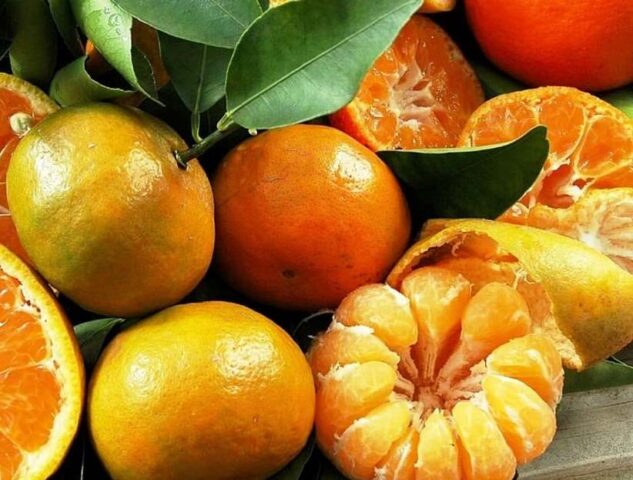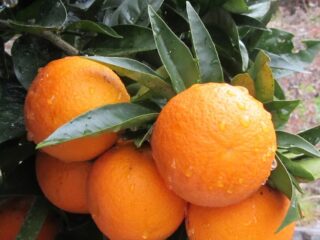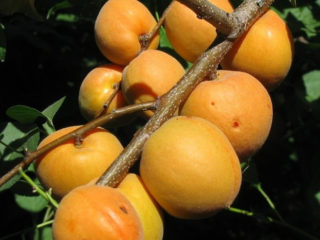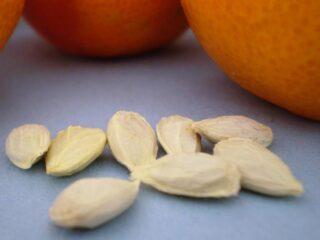Content
Orange or tangerine – which is better, the choice is not easy. Some base it on their own taste preferences, others pay more attention to the composition and properties of the fruit. Citrus fruits contain the same vitamins, but in different quantities. There are differences in taste and aroma.
General characteristics of orange and tangerine
These plants are evergreen fruit trees and belong to the Citrus genus of the Rutaceae family. Fruits ripen for at least six months - tangerines up to nine months, oranges up to 12-14. These species are widely distributed along the Mediterranean coast.
Fruits have many similarities:
- multi-seeded and multi-locular fruits;
- two-layer peel;
- there are many juice sacs in the pulp;
- ease of division into slices - fruit nests (up to 12 pieces);
- the lobules are covered with a film-shell, inside there are 1-2 seeds, located one above the other.
What is healthier: oranges or tangerines?
When determining which fruit is healthier, you need to analyze its nutritional value and chemical composition. Each option has winning positions.
It is believed that it is better to eat tangerines for the heart and liver.They are more useful for diseases of the respiratory system. Diabetics are better off choosing oranges - they contain less sugar.
The difference lies in the degree of allergenicity. Tangerines are better in this regard, since the risk of such a reaction to them is lower.
Where are there more vitamins?
Both fruits are rich in ascorbic acid. The difference in the amount of vitamin C in tangerines and oranges is 42 and 67%, respectively. There are differences in other elements:
Vitamin | Content in orange, % | Content in tangerine, % |
A (beta-carotene) | 0,9 (1) | 1,1 (1,2) |
E | 1,3 | 1,3 |
Thiamine (B1) | 2,7 | 4 |
Riboflavin (B2) | 1,7 | 1,7 |
Nicotinic acid (B3, PP) | 1,5 | 1,5 |
Choline (B4) | 1,7 | 2 |
Pantothenic acid (B5) | 5 | 4,3 |
Pyridoxine (B6) | 3 | 3,5 |
Biotin (B7, H) | 2 | 1,6 |
Folic acid (B9) | 1,3 | 4 |
Most of the vitamins in these citrus fruits are in approximately equal quantities. Obviously, tangerine is inferior to its relative only in terms of ascorbic acid content, but it contains three times more folic acid.
Which has more calories?
Another difference between tangerines and oranges is nutritional value. The first fruit contains 38 kcal per 100 g, and the second - 43 kcal. If you consume these citrus fruits in small quantities, the difference is almost invisible.

Both citrus fruits have almost the same content of proteins, fats and water.
What is the difference between a tangerine and an orange?
Both citrus fruits have many differences. The difference lies in appearance, taste and aroma. The history of origin and names also differs.
Origin story
The homeland of the tangerine tree is considered to be southern China and Cochin China (southeast Indochina). The exact date of appearance of the species is unknown. According to one version, it became known about a thousand years ago, according to another - many centuries before our era.
The history of the origin of the name of the tangerine tree is also ambiguous. The Russians borrowed this word from the Spanish language, and in it it appeared from the Portuguese “mandarim” denoting a Chinese official. There are two versions of the origin of the name:
- orange peel color - ministers in China wore clothes of this shade;
- Chinese officials were engaged in the cultivation of citrus.
Mandarin was brought to Europe only at the beginning of the 19th century. There is a version that trees of this species were brought as a gift to Napoleon.

The leader in the production of tangerines is China - in 2016 it accounted for more than half of such citrus fruits
Oranges were grown in China as early as 2500 BC. The name of the fruit and fruit tree comes from the Dutch word “apfelsine”.
Oranges were brought to Europe by Portuguese sailors. They quickly became popular. Such fruits began to be grown in greenhouses - the name of such structures comes from the word “orange”.
Today, both citrus relatives are widely distributed throughout the Mediterranean coast. Oranges are also grown in Central America. Their counterparts are cultivated in Asia, Florida (USA), Argentina and Brazil. In the territory of the former USSR they are grown in Abkhazia and Sochi.
Description of fruits
Tangerines are smaller in size - 4-6 cm. They usually weigh no more than 150 g. The fruit is spherical in shape, often flattened at the poles. Some varieties do not have seeds.
Oranges are often larger than tangerines. Their shape is round. The diameter of the average fruit is 6-8 cm, and the weight is 170-210 g.
Citrus fruits have two layers of peel, but oranges have thicker, yellow-orange peels. Their brothers are orange or orange-yellow.
One of the differences between oranges is the navel varieties. They are named so because of the anomaly of hesperidium (berry-shaped fruit). The carpels are formed in two rows, therefore two fruits develop - one is rudimentary and located at the top of its larger brother. This small appendage can be seen through a small hole in the orange peel, which is called the navel.
Another difference between fruits is productivity. An orange tree produces up to 38 thousand citrus fruits, and a tangerine tree produces 5-7 times less

Some tangerine varieties have an air gap between the pulp and the peel - this makes cleaning even easier
Taste qualities
You can distinguish tangerines from oranges not only by appearance, but also by taste. The first variety of citrus fruits is distinguished by its sweet pulp, since it contains more sugar (on average 11 g). Another difference is the pronounced aroma. It is this, coupled with ripening for winter, that evokes strong associations with the New Year holidays.
Orange fruits taste more sour, which is due to a higher content of ascorbic acid and less sugar (on average 9 g). Their smell is not as intense. Better tastier, juicier and larger varieties with thin skin:
- Messinian;
- Malaga;
- Sicilian;
- Genoese;
- Maltese.
What is better to choose
It is impossible to say categorically which citrus is better. It all depends on the selection criteria. If the vitamin C content comes first for strengthening the immune system, then you definitely need to take orange fruits.When the choice is based on taste, you should focus on your own preferences. Some people like the more pronounced sweetness of tangerines, while others find their more sour counterparts better.
The differences in nutritional value between both representatives of citrus fruits are small, so it is better to base the choice on taste or quantitative vitamin content. It is optimal to include both fruits in your diet - each has a whole range of beneficial properties and qualities that are better in a particular type.
Conclusion
It is not necessary to choose orange or tangerine; it is useful to include both citrus fruits in your diet. They belong to the same genus and family and have many similar features in the form and structure of the fruit. Both fruits differ in the quantitative content of vitamins and other valuable elements, taste, and aroma.








